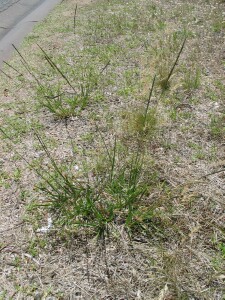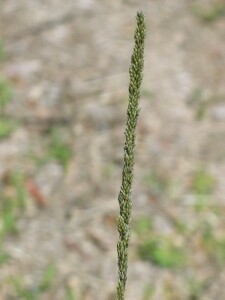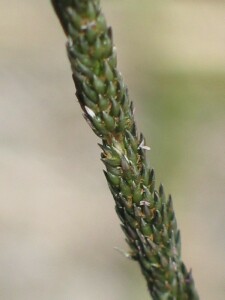Parramatta Grass
Back | Salinity Indicator Plants Home | Common name home | Scientific name home | Photo Gallery | Glossary
| Parramatta Grass photos | Family: Grass (Poaceae syn. Gramineae) |
| Scientific Name: | Sporobolus africanus (syn. Sporobolus indicus var. capensis) |  Parramatta Grass plant Photo: A J Brown |
Other Common Names: | Rat-tail Grass | |
Status: | Native of the Cape region of South Africa. Naturalised in all Australian States except the Northern Territory. Also found in India, New Zealand, America and the West Indies. | |
Plant Description: | Coarse tufted perennial grass to 70 cm tall with tough, smooth, hairless leaves to 20 cm long and 6 mm wide. Flower-heads are slender dense spike-like panicles to 20 cm long and numerous, short overlapping branches. Spikelets are 2-2.5 mm long, greyish-green to purplish-green. | |
Habitat: | Mainly coastal or near-coastal, growing in sandy road verges and rough lawns. Also grows in swampy and wet areas, heathlands, grassy woodlands and dry sclerophyll forests. Parramatta Grass has been reported to grow in saline conditions. | |
Comments: | A weed of pastures and native vegetation. It differs from Salt Couch and Rat’s-tail Couch in being bigger plants with much longer flower-heads. Parramatta Grass has been confused with Giant Parramatta Grass (Sporobolus fertilis syn. S. indicus var. major), a native of tropical Asia and Malesia, from which it differs in having larger spikelets but shorter growth. Giant Parramatta Grass grows in near coastal habitats from East Gippsland to North Queesland. |
 Parramatta Grass flower-head Photo: A J Brown |  Paramatta Grass spikelets Photo: A J Brown | |
Invasive plant species - Parramatta Grass


